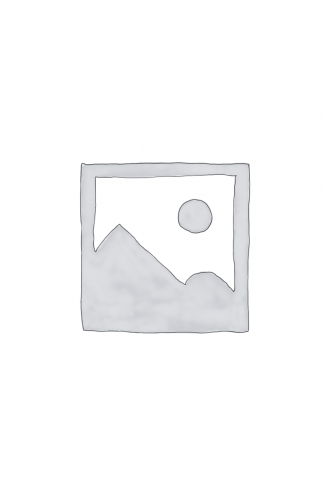Showing 37–48 of 85 results
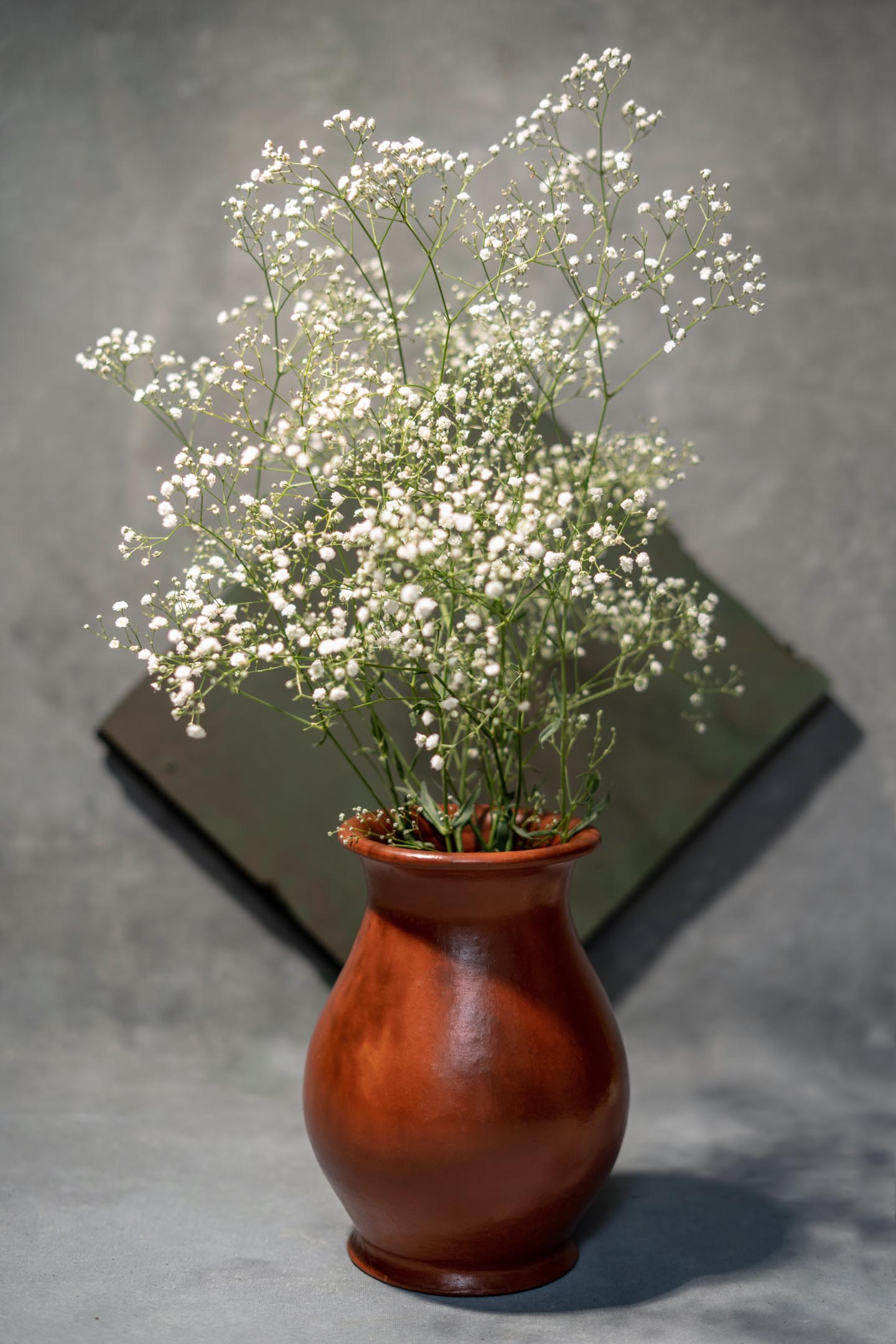
Kumbham Vase
$20.00
$20.00
A "Kumbham" is a type of pottery with a wide bottom and narrow neck. Pottery work is traditionally done by "Kumbharan" communities. They live along river banks or paddy fields where they could get regular supply of good quality clay. The skilful hands of Aruvacode potters crafted this "Kumbham". Produced from pure clay, this vase is not just going to enhance your home decor, but also ensures no harm is made to nature. Yes, this Kumbham vase is eco friendly and sustainable.
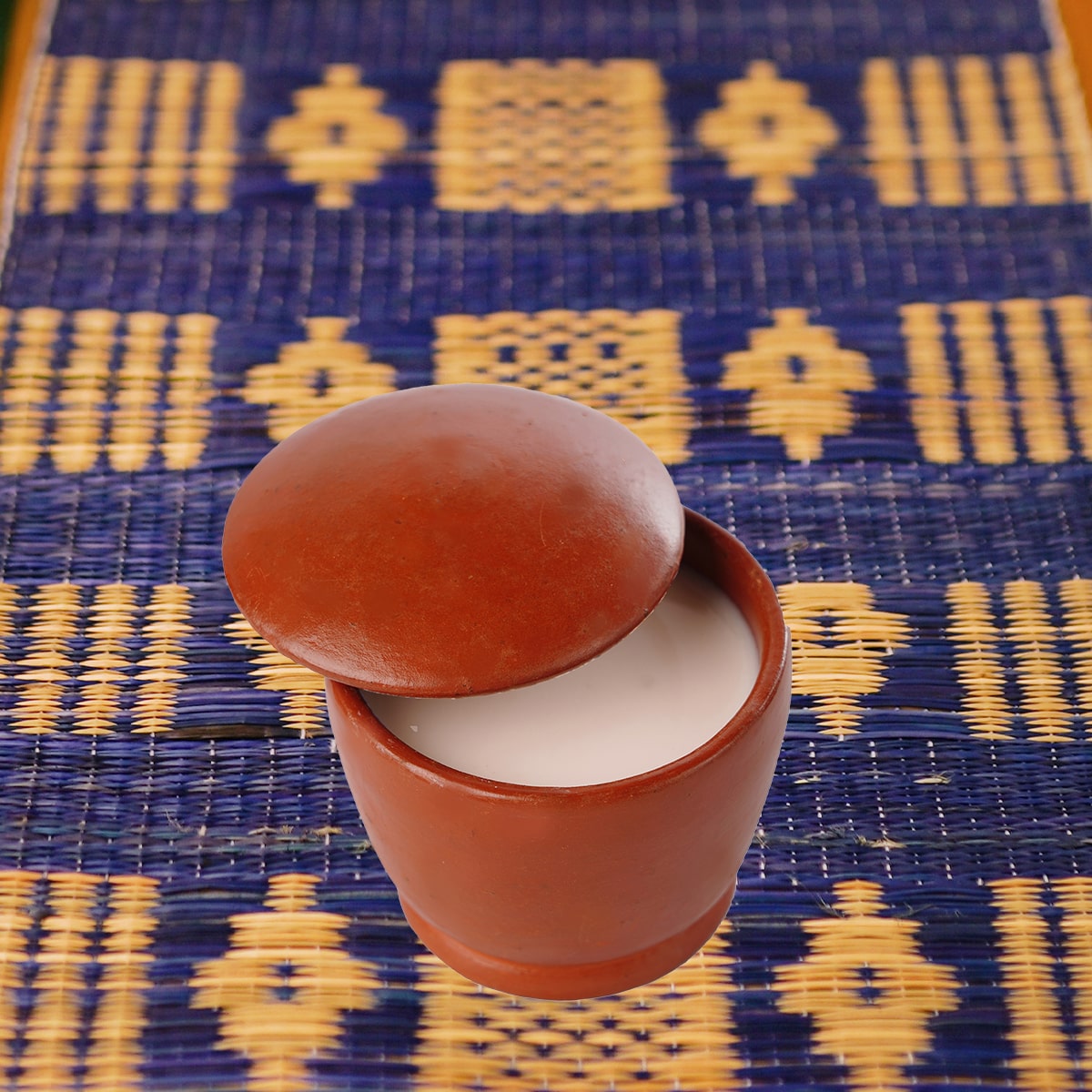
Kunhikkalam - Personal Curd Setter
$12.00
$12.00
Our Mothers teach us family recipes. But we often fail to recreate that magic in our food. For sure, one reason is the way we cook, our affinity for short cuts. At Graamyam, we are making a small effort to help you to bring back your memories of food, as prepared by your mother. Here is a small curd setter, to make home curd with a whole new accent, with the earthy flavour of the clay pot. This is just enough to make curd for a person's consumption. Curd set in a steel container can never match the flavour and richness of curd set in a terracotta vessel. Clay being porous can absorb water; therefore, when you make yoghurt in clay pots, the clay absorbs the excess water, and the yoghurt is much thicker and creamier. No other containers can match this characteristic of terracotta. Terracotta curd setters are 100% food safe as per international standards. Clay helps keep the culture of the curd at the right temperature for it to grow successfully. These curd setters help in cutting down the sourness of curd as it is made of clay which is alkaline in nature. It can balance out the acidity of the yoghurt to a large extent.
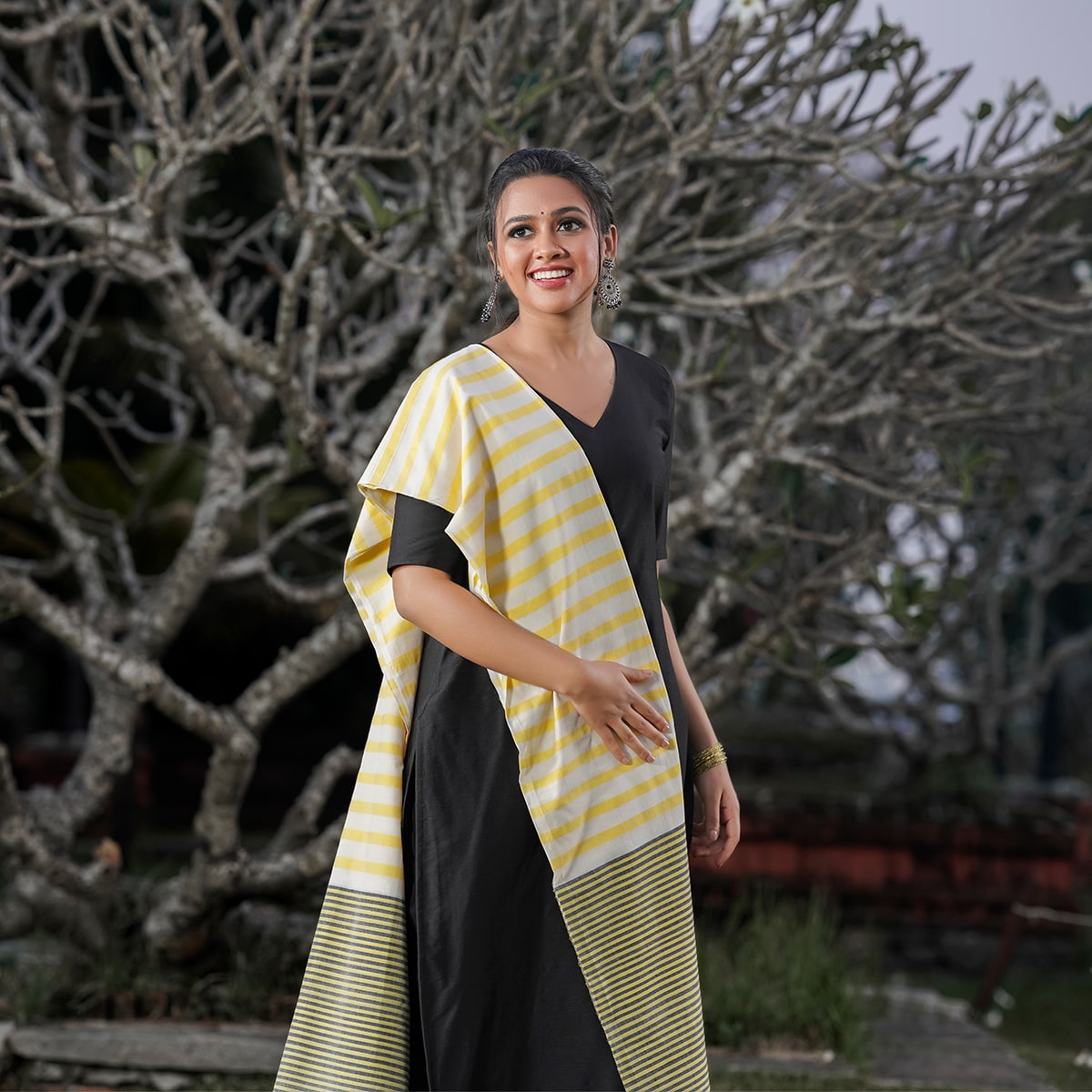
Kuruvi Dupatta
$25.00
$25.00
Story of Weaving: The handloom fabric is a type of fabric that is woven using hand operated looms. Two sets of interlacing yarns, the warp (length) and weft (width), are woven on a loom hand-operated by weavers. These looms do not use electricity. Human handling lends the fabrics a unique feel and renders the fabrics more value. The resultant fabric is softer, more durable and much more comfortable than machine-made fabrics. Handloom cotton is more breathable and thus feels lighter in summers and provides more insulation in winters. The dyeing process also becomes easier for handloom cotton as the colour penetration is substantially more. Hues are absorbed better thus look resplendent on handloom cotton. The art of hand weaving is labour intensive and takes a longer time. But, the beauty it adds to the fabric is priceless. Choosing handloom cotton supports the rich weaving heritage of India and lets the weavers carry on the precious art-form to the future generations as well.
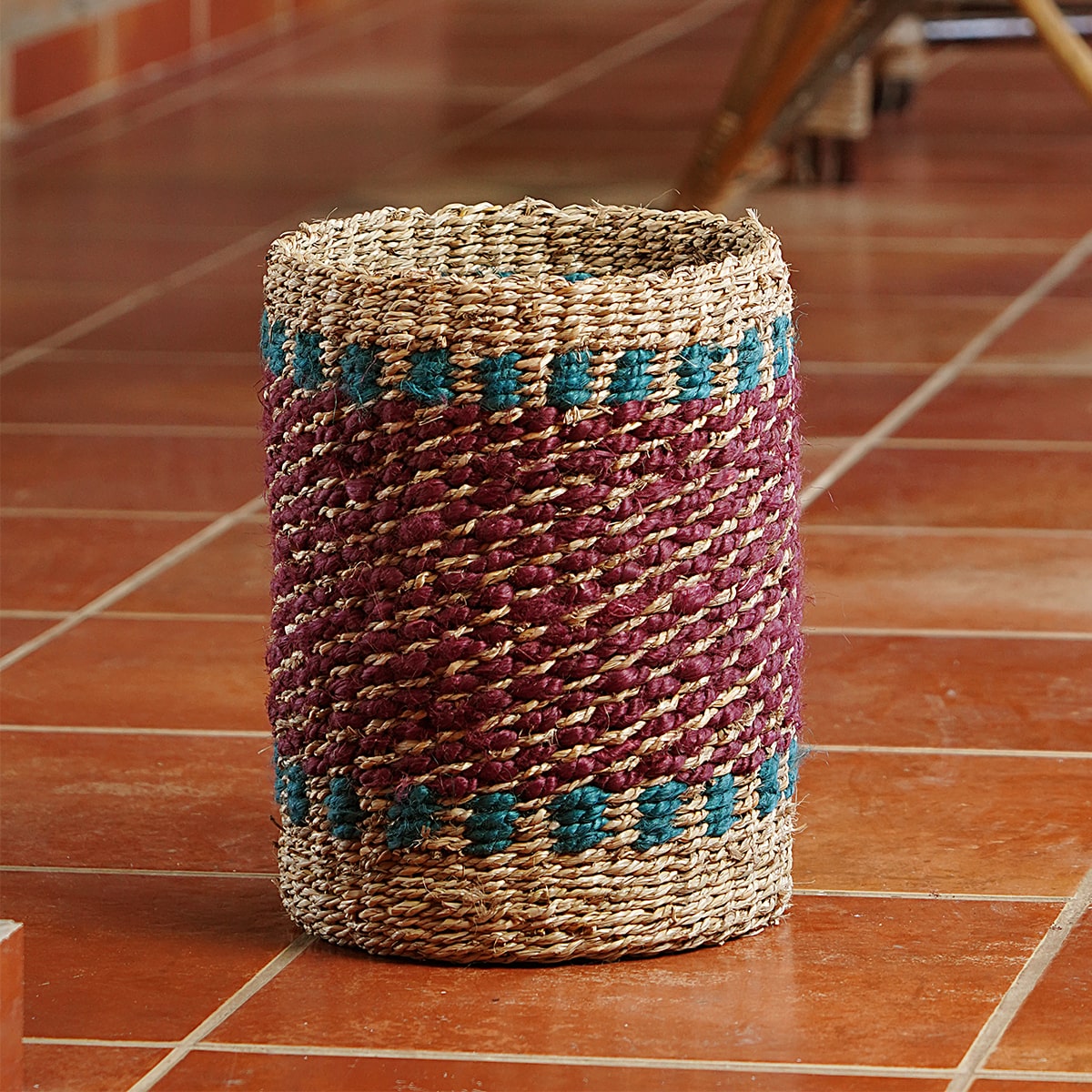
Kutta Planter/Bin Basket
$14.00
In Kerala, the land of coconut trees, we find a way to create utility from every part of that tree. For decades, making coir by processing coconut fibre has been a source of livelihood for a significant share of the population in this region. Coconut fibre is processed into strands and these strands are twisted together to form coir. Later coir is dyed with beautiful colours. Our artisans in Alleppey district of Kerala use this coir to make baskets. A basket completely made of natural materials, symbolising the spirit of Kerala.

Lalitham Yoga Mat
$55.00
She goes for an early morning yoga session to a park near her home. An easy to carry mat makes her walk to the park breezy. Once she reaches the park, she spreads the mat on any flat surface. She is all ready for a relaxing yoga to energise her body and soul. The early morning sun dries up the mat. After yoga, she rolls her mat and returns home. If there is anything stuck to the mat, she just shows it under running water and put it under the sun to dry. On days when there is a slight drizzle, she blow dries the mat with a hair dryer. She keeps the dry mat in her cupboard and is ready for another busy day at work. Story of Cora Grass and Mat weaving: Cora Grass is found along river banks and in marshy lands. It can grow up to a height of two meters. Family members of mat weavers collect these cora grass and bring it for processing. They cut each grass stem into four strands and remove the soft material at the centre. Before further processing, the grass is dried under the sun, till it develops a beige colour naturally. The grass is then dyed using different colouring materials and processes to match artists imagination. Sometimes, the colouring process takes days, depending on the shade of colour desired. The handcrafted mats are woven using hand operated looms. A set of white yarns as the warp (length) and thin strands of cora grass as weft (width), are woven on a loom hand-operated by weavers. These looms do not use electricity. Human handling lends the mat a unique feel and more value. The resultant mat is softer, more durable and much more comfortable than machine-made mats. The cora grass strands are compacted by hand by the weavers, ensuring sturdiness to the mat. The art of hand weaving is labour intensive and takes a longer time. But, the beauty and quality it adds to the mat is priceless. Choosing handwoven mats supports the rich weaving heritage of Killimangalam and lets the weavers carry on the precious art-form to the future generations as well.
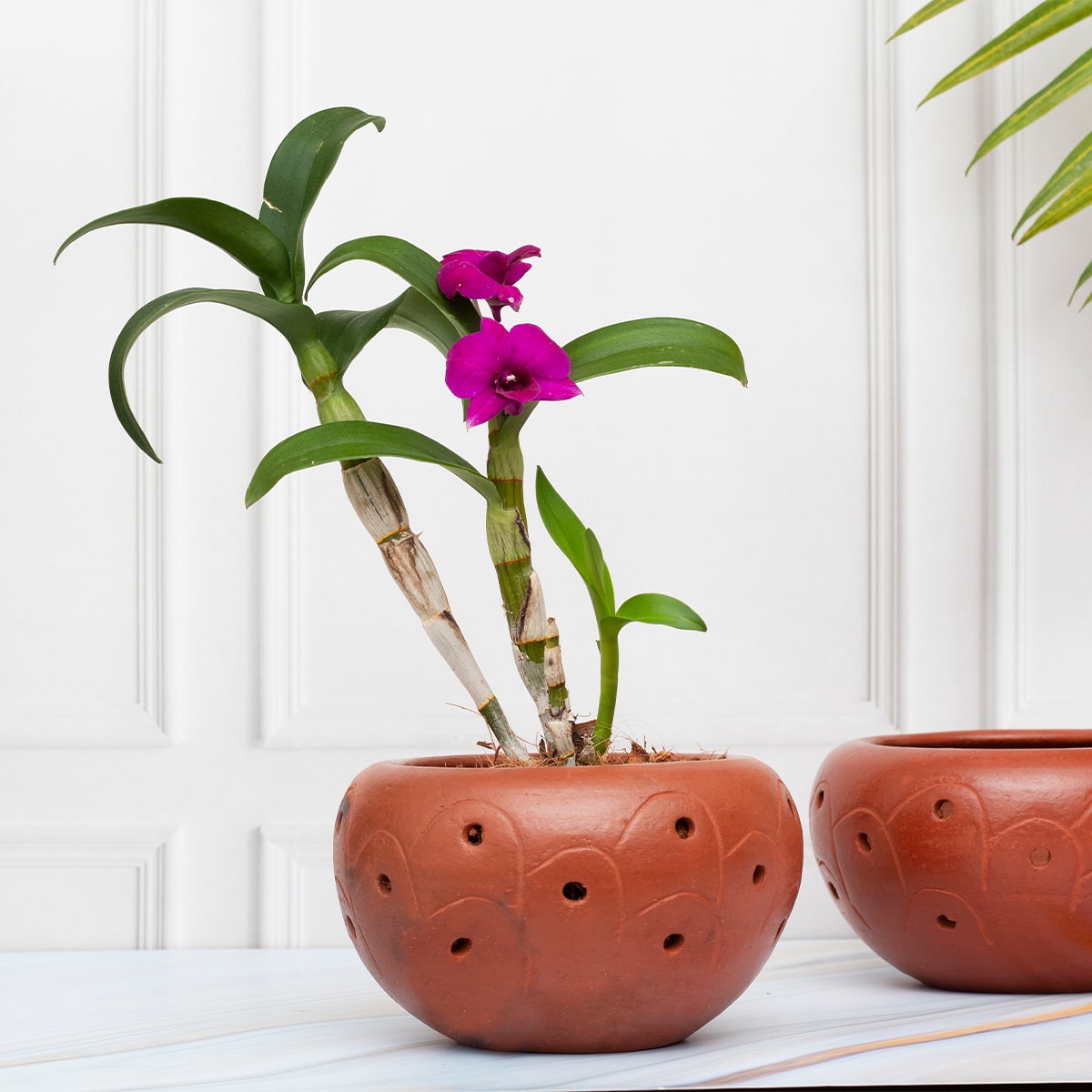
Latha Terracotta Planter
$18.00
$18.00
Decorate your interior with a fine terracotta planter, hand polished with stone to give a smooth finish.
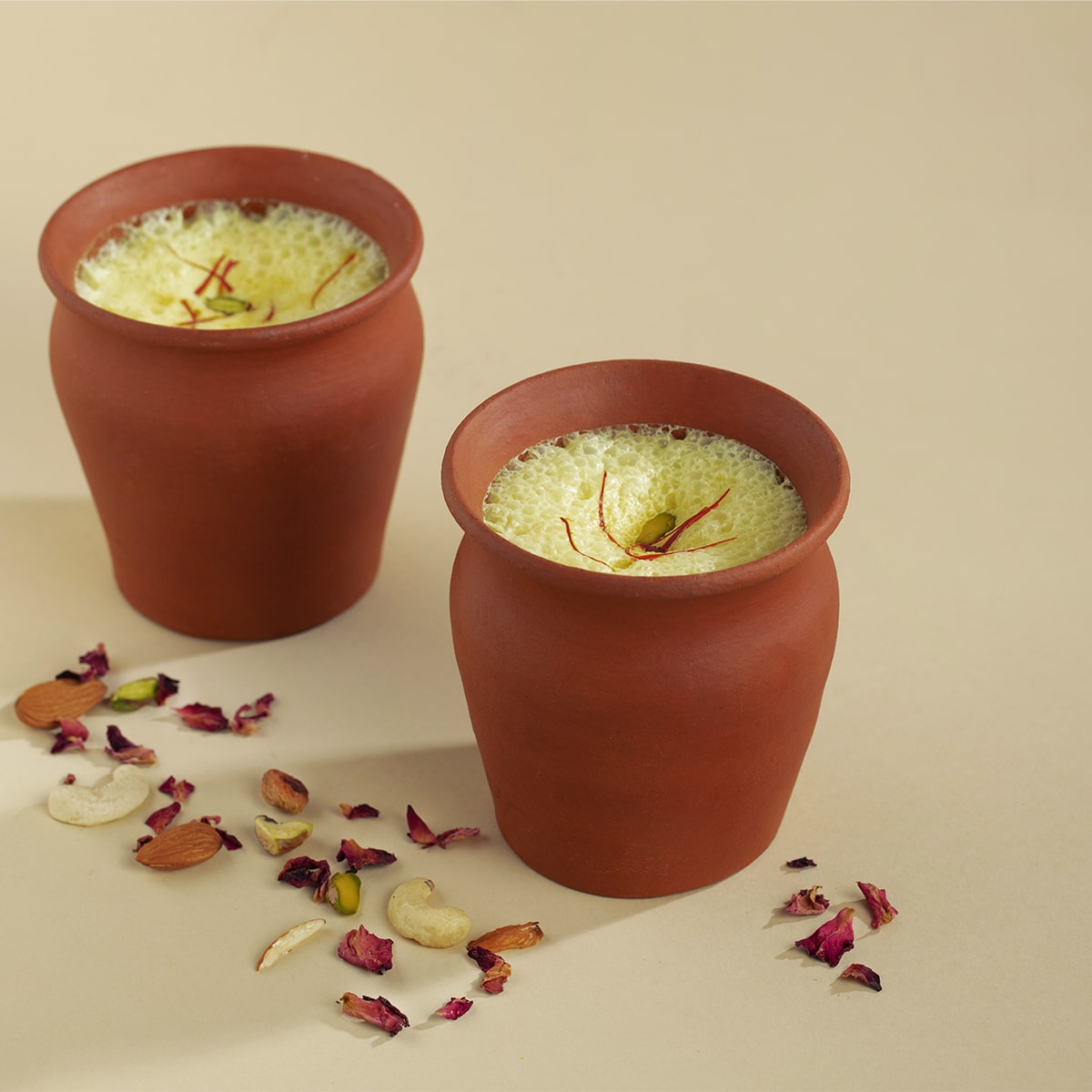
Lotta - Set of 2 Terracotta cups
$10.00
$10.00
Lotta is a tumbler used in olden days to drink water or any beverage. Here is a lotta handcrafted by our potter community paying attention to each and every piece. They have given it a rustic finish to give that earthy feeling. It is a unique piece, suitable to carry any cold or hot beverage. Get a pair of this and have a cup of your favourite drink in it. You can always browse through our set of serving trays to have some snacks along with the beverage...
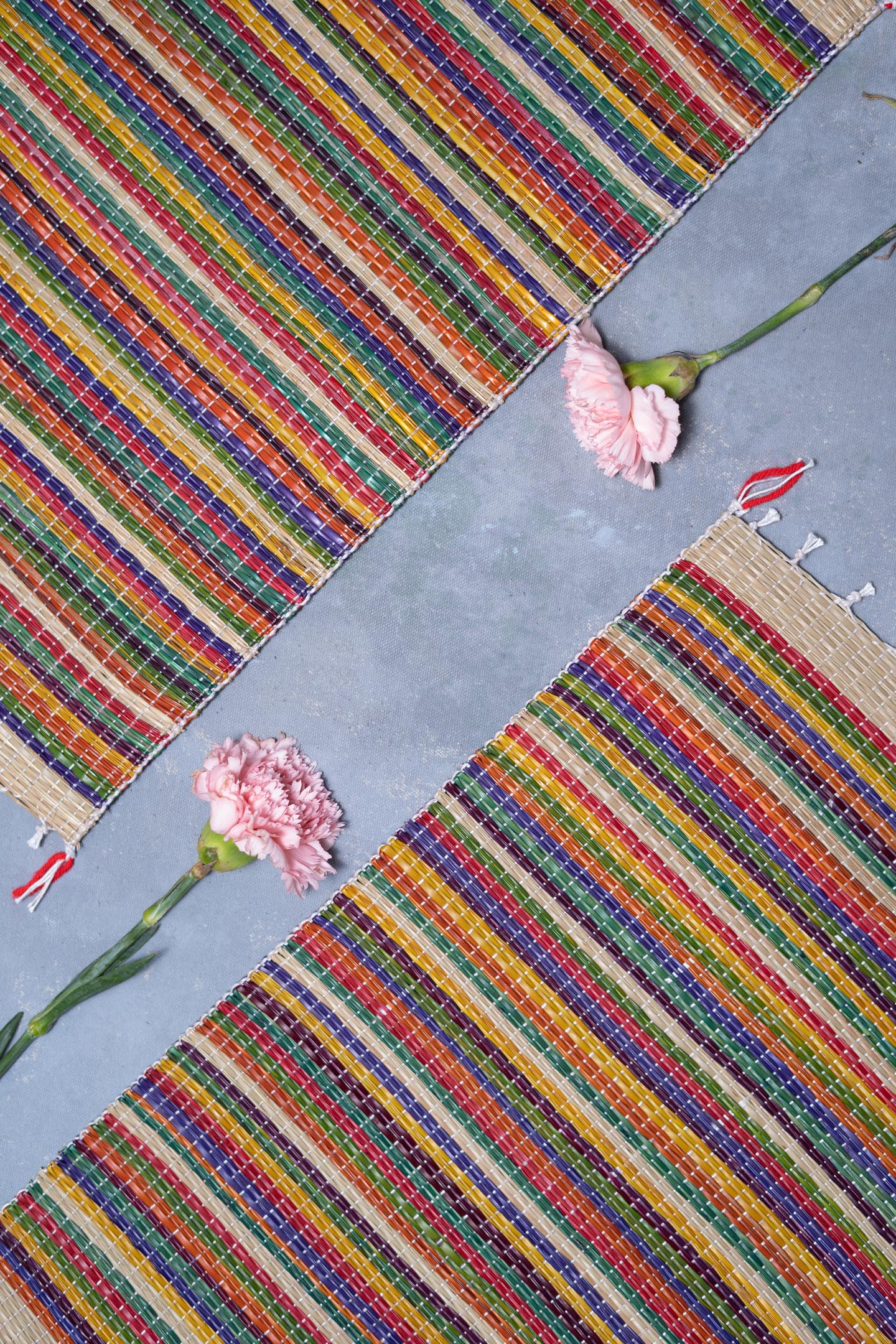
Maarivillu Place Mat
$45.00
Rainbow coloured cora grass Placemat Set of six not only dress up your table in interesting patterns, but it takes away your worry of spills and smudges on the table. You may pair it with other related crafts from Graamyam to complete the look of your dinner table. Story of Cora Grass and Mat weaving: Cora Grass is found along river banks and in marshy lands. It can grow up to a height of two meters. Family members of mat weavers collect these cora grass and bring it for processing. They cut each grass stem into four strands and remove the soft material at the centre. Before further processing, the grass is dried under the sun, till it develops a beige colour naturally. The grass is then dyed using different colouring materials and processes to match artists imagination. Sometimes, the colouring process takes days, depending on the shade of colour desired. The handcrafted mats are woven using hand operated looms. A set of white yarns as the warp (length) and thin strands of cora grass as weft (width), are woven on a loom hand-operated by weavers. These looms do not use electricity. Human handling lends the mat a unique feel and more value. The resultant mat is softer, more durable and much more comfortable than machine-made mats. The cora grass strands are compacted by hand by the weavers, ensuring sturdiness to the mat. The art of hand weaving is labour intensive and takes a longer time. But, the beauty and quality it adds to the mat is priceless. Choosing handwoven mats supports the rich weaving heritage of Killimangalam and lets the weavers carry on the precious art-form to the future generations as well.
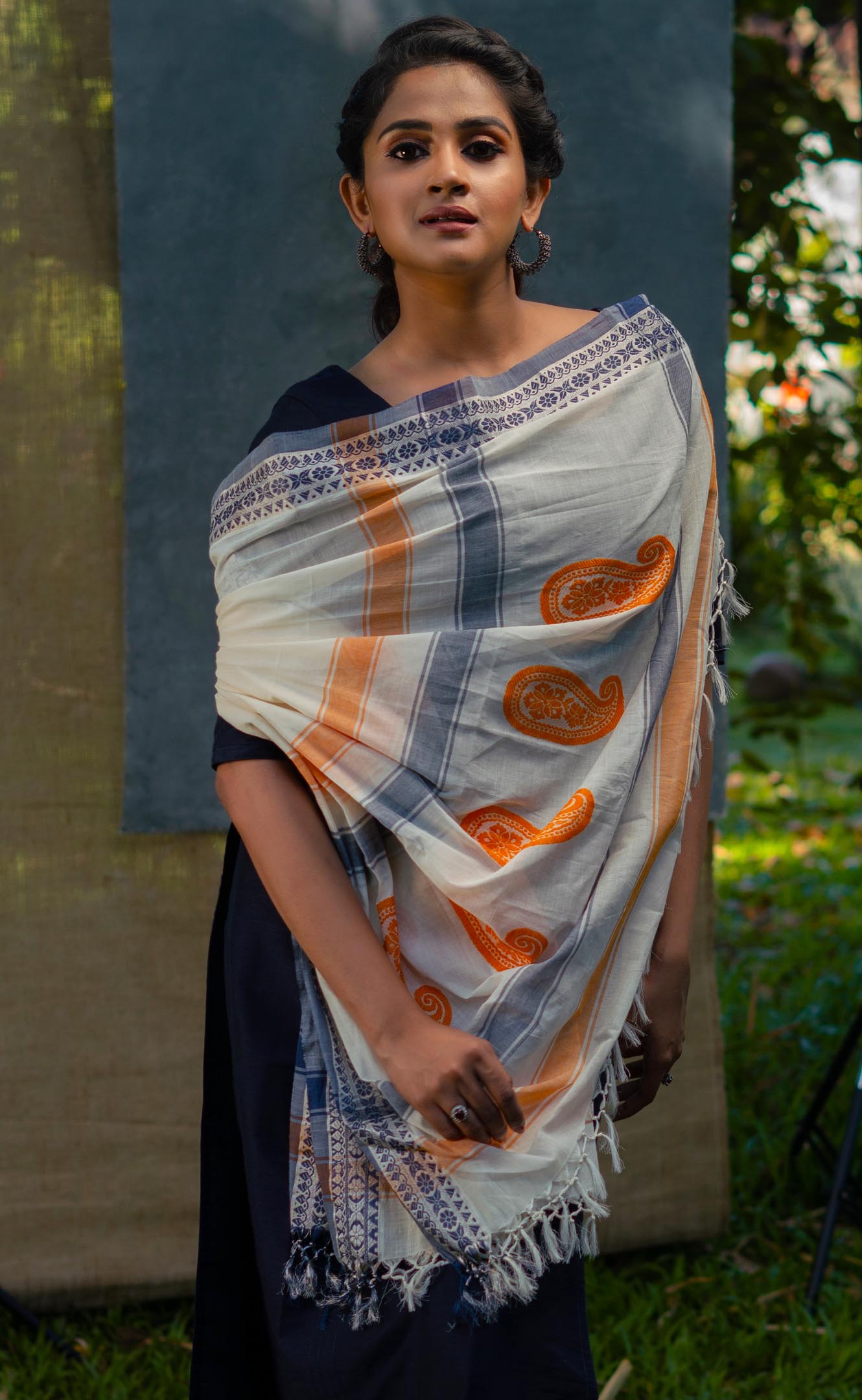
Manayola Dupatta
$40.00
When you watch Kathakali or Theyyam, it is impossible to miss the beautiful hues of orange colour on the performer's face. That colour is extracted from "Manayola", a deep yellow-orange coloured stone. Here you get to wear a Dupatta that has acquired its character from our traditional art forms. Isn't it energising! Story of Weaving: The handloom fabric is a type of fabric that is woven using hand operated looms. Two sets of interlacing yarns, the warp (length) and weft (width), are woven on a loom hand-operated by weavers. These looms do not use electricity. Human handling lends the fabrics a unique feel and renders the fabrics more value. The resultant fabric is softer, more durable and much more comfortable than machine-made fabrics. Handloom cotton is more breathable and thus feels lighter in summers and provides more insulation in winters. The dyeing process also becomes easier for handloom cotton as the colour penetration is substantially more. Hues are absorbed better thus look resplendent on handloom cotton. The art of hand weaving is labour intensive and takes a longer time. But, the beauty it adds to the fabric is priceless. Choosing handloom cotton supports the rich weaving heritage of India and lets the weavers carry on the precious art-form to the future generations as well.
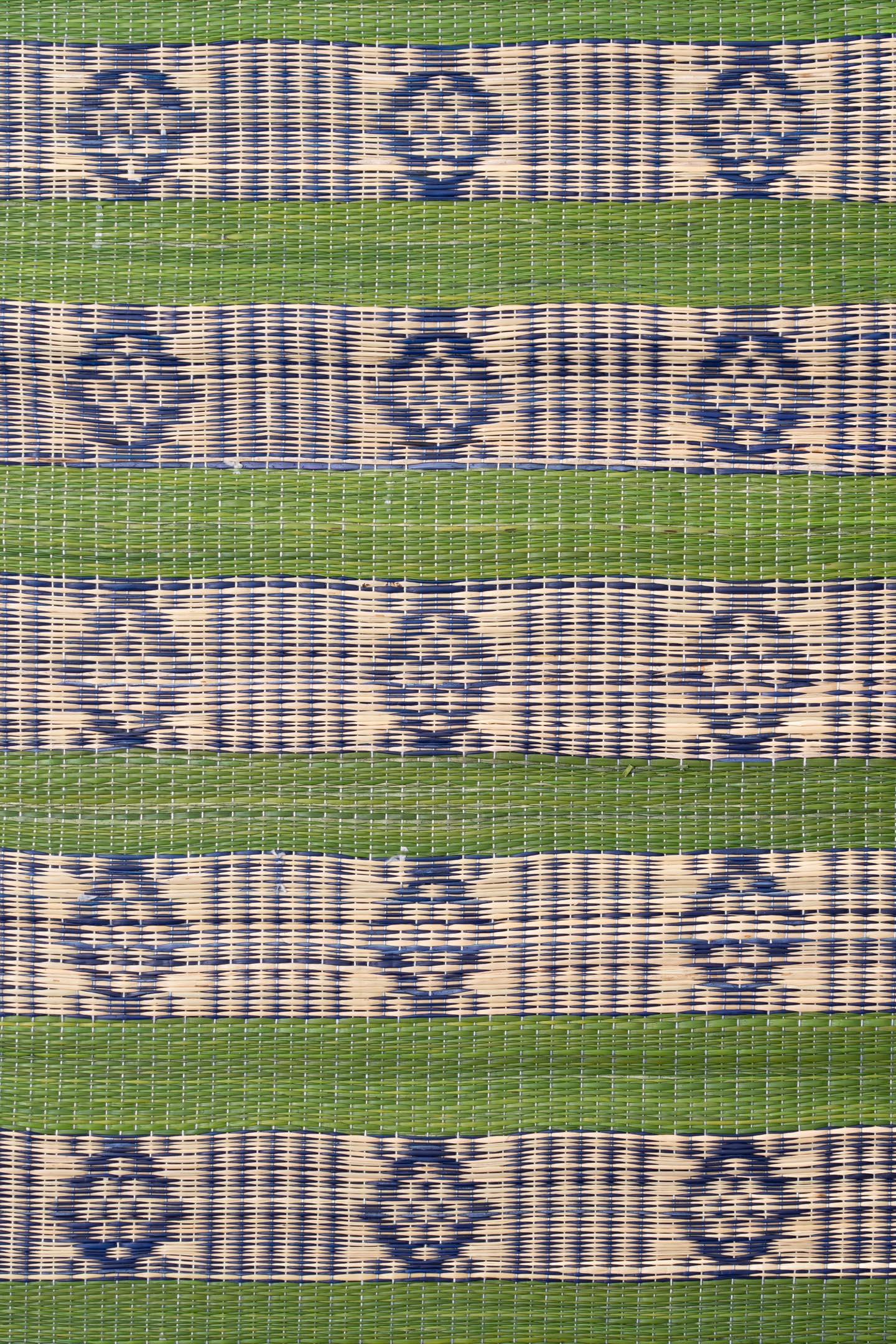
Marathakam Picnic Mat
$65.00
Oh! the bright green emerald (Marathakam) look has such a cooling effect with the green tone on the mat. That soft feeling of a well treated cora grass. Made of all natural materials, you can leave all your worries while you spend time relaxing on it. Have a relaxing outing in the park! Story of Cora Grass and Mat weaving: Cora Grass is found along river banks and in marshy lands. It can grow up to a height of two meters. Family members of mat weavers collect these cora grass and bring it for processing. They cut each grass stem into four strands and remove the soft material at the centre. Before further processing, the grass is dried under the sun, till it develops a beige colour naturally. The grass is then dyed using different colouring materials and processes to match artists imagination. Sometimes, the colouring process takes days, depending on the shade of colour desired. The handcrafted mats are woven using hand operated looms. A set of white yarns as the warp (length) and thin strands of cora grass as weft (width), are woven on a loom hand-operated by weavers. These looms do not use electricity. Human handling lends the mat a unique feel and more value. The resultant mat is softer, more durable and much more comfortable than machine-made mats. The cora grass strands are compacted by hand by the weavers, ensuring sturdiness to the mat. The art of hand weaving is labour intensive and takes a longer time. But, the beauty and quality it adds to the mat is priceless. Choosing handwoven mats supports the rich weaving heritage of Killimangalam and lets the weavers carry on the precious art-form to the future generations as well.
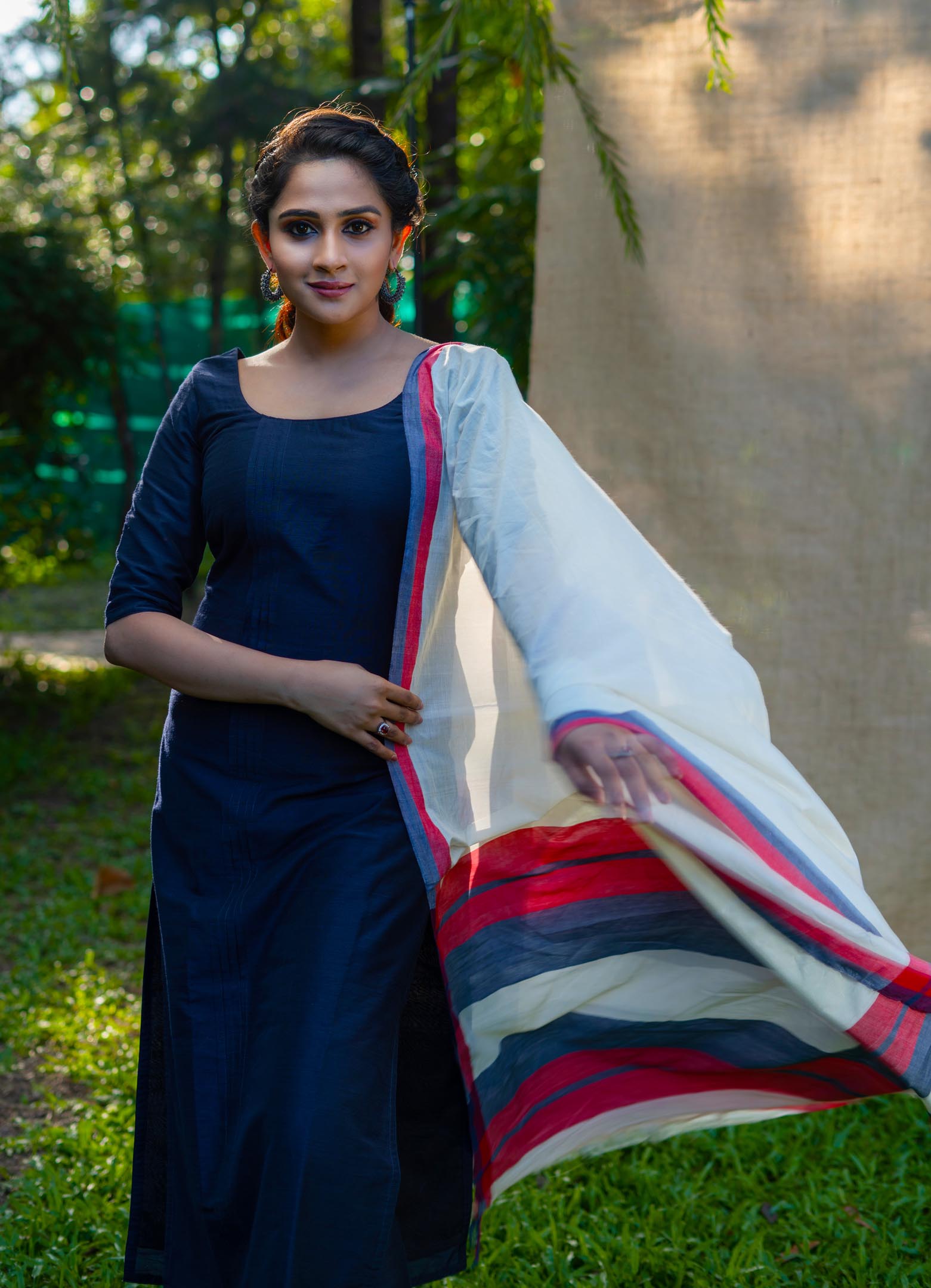
Medam Dupatta
$25.00
$25.00
When the energy, passion and love of red meet the calmness, trust and intelligence of blue, this Dupatta acquires a perfect character. Those who are born in Medam raasi (Aries zodiac sign), are often attracted to shades of blue and red. Apparently, blue and red signifies energy, passion and, intelligence. Wear this and let the world know your unique traits! Story of Weaving: The handloom fabric is a type of fabric that is woven using hand operated looms. Two sets of interlacing yarns, the warp (length) and weft (width), are woven on a loom hand-operated by weavers. These looms do not use electricity. Human handling lends the fabrics a unique feel and renders the fabrics more value. The resultant fabric is softer, more durable and much more comfortable than machine-made fabrics. Handloom cotton is more breathable and thus feels lighter in summers and provides more insulation in winters. The dyeing process also becomes easier for handloom cotton as the colour penetration is substantially more. Hues are absorbed better thus look resplendent on handloom cotton. The art of hand weaving is labour intensive and takes a longer time. But, the beauty it adds to the fabric is priceless. Choosing handloom cotton supports the rich weaving heritage of India and lets the weavers carry on the precious art-form to the future generations as well.
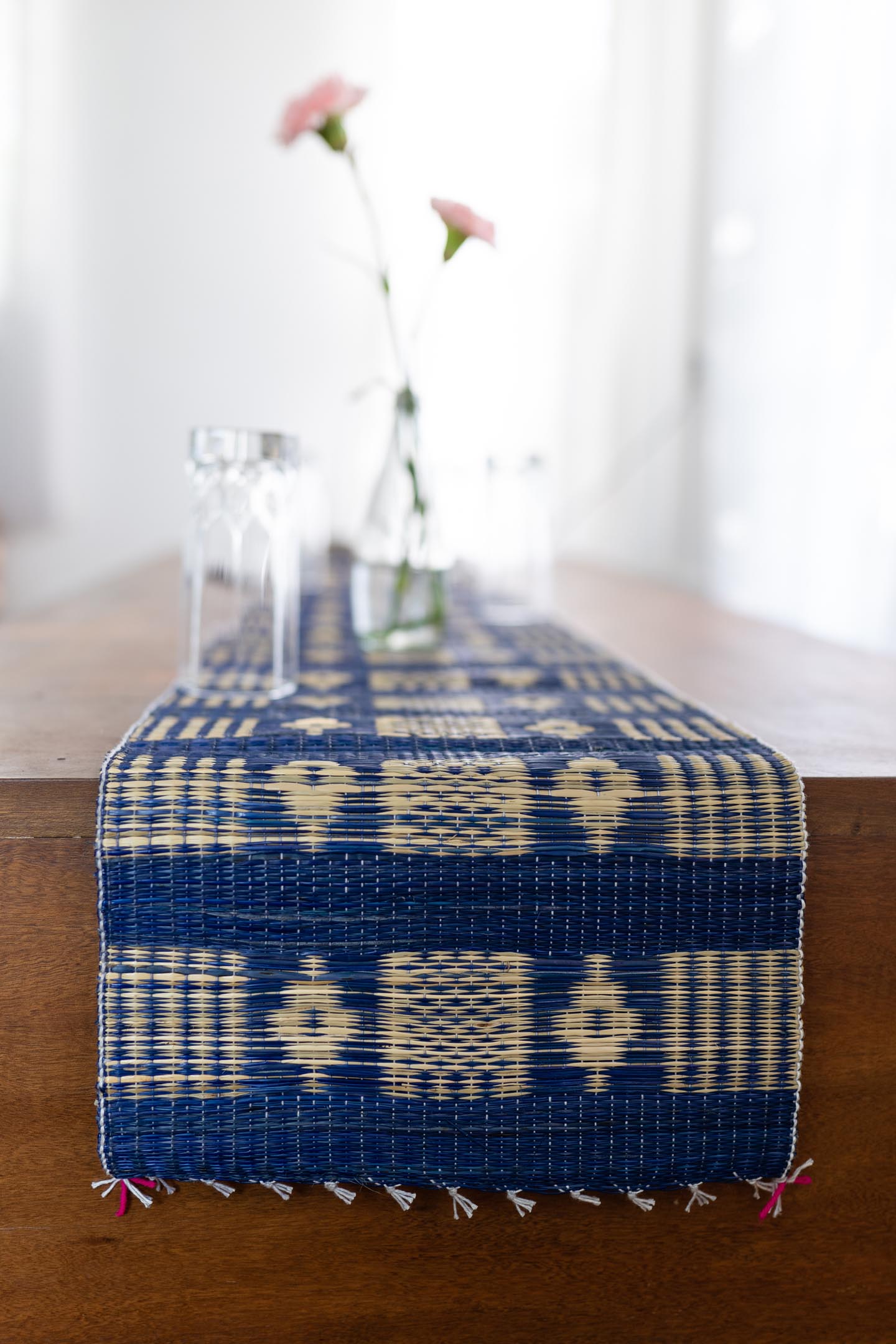
Neelam Runner
$35.00
Adorn your dining table with this Elevating Blue Table Runner, made of cora grass starnds. Apart from serving as a decor, it protects your table from spills and damage that can be caused by food, liquids or even dripping candle wax. You may pair it with other crafts from Graamyam to complement all things nice, sweet and spicy, served on your dinner table. Story of Cora Grass and Mat weaving: Cora Grass is found along river banks and in marshy lands. It can grow up to a height of two meters. Family members of mat weavers collect these cora grass and bring it for processing. They cut each grass stem into four strands and remove the soft material at the centre. Before further processing, the grass is dried under the sun, till it develops a beige colour naturally. The grass is then dyed using different colouring materials and processes to match artists imagination. Sometimes, the colouring process takes days, depending on the shade of colour desired. The handcrafted mats are woven using hand operated looms. A set of white yarns as the warp (length) and thin strands of cora grass as weft (width), are woven on a loom hand-operated by weavers. These looms do not use electricity. Human handling lends the mat a unique feel and more value. The resultant mat is softer, more durable and much more comfortable than machine-made mats. The cora grass strands are compacted by hand by the weavers, ensuring sturdiness to the mat. The art of hand weaving is labour intensive and takes a longer time. But, the beauty and quality it adds to the mat is priceless. Choosing handwoven mats supports the rich weaving heritage of Killimangalam and lets the weavers carry on the precious art-form to the future generations as well.
Showing 37–48 of 85 results
Related products
View all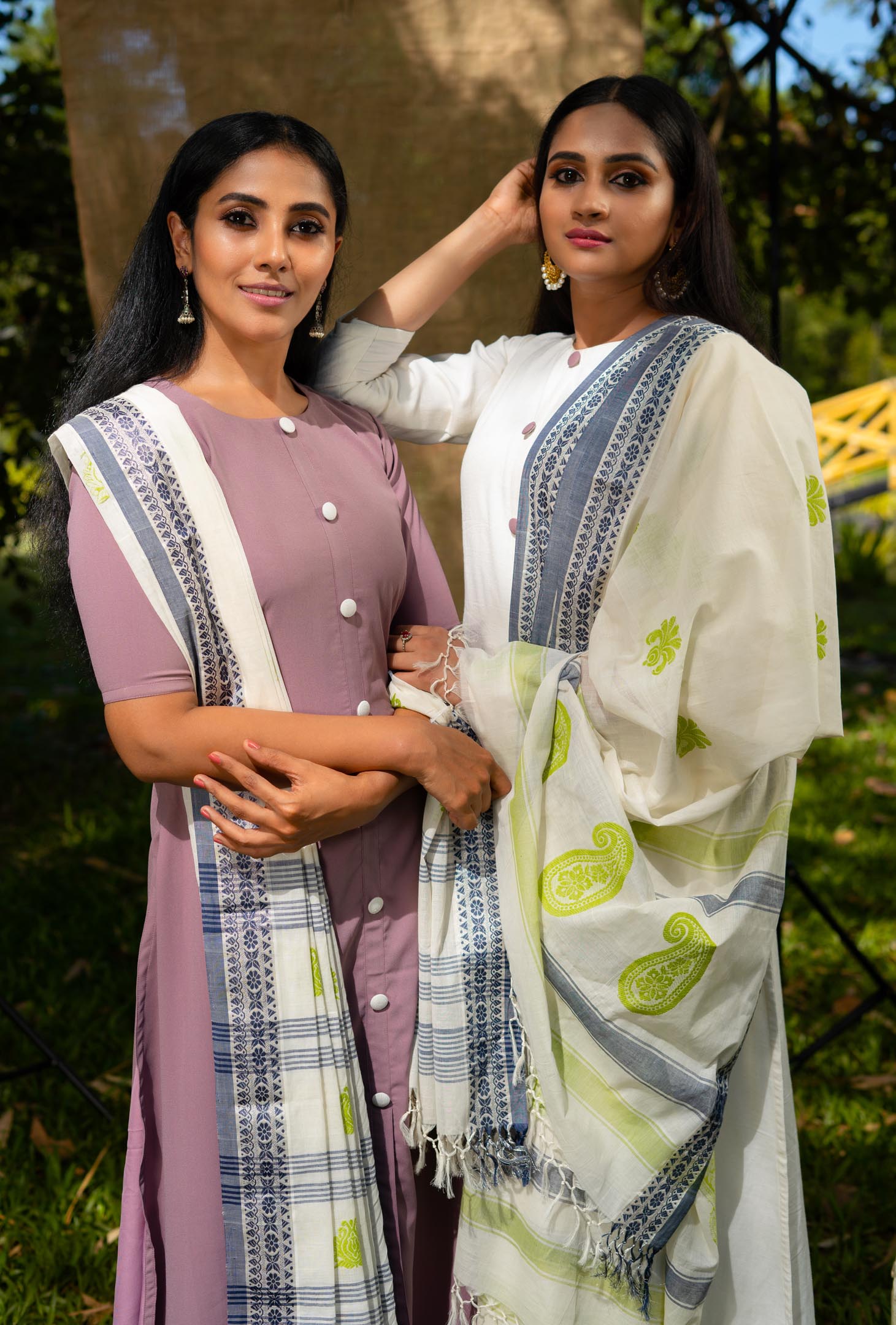
Saarika Dupatta
$2250
$2250
On a visit to the banks of the river Nila, we saw a group of parrots flying over, across the river to Kuthampully. That sight was mesmerising! We couldn't resist, but to attempt to ingrain that colour into our Dupatta, just for you! Inspired by the sights around the weavers village, we have added the mango design in green on the Dupatta. We are celebrating the nature around the weavers village through this "Saarika" series. Story of Weaving: The handloom fabric is a type of fabric that is woven using hand operated looms. Two sets of interlacing yarns, the warp (length) and weft (width), are woven on a loom hand-operated by weavers. These looms do not use electricity. Human handling lends the fabrics a unique feel and renders the fabrics more value. The resultant fabric is softer, more durable and much more comfortable than machine-made fabrics. Handloom cotton is more breathable and thus feels lighter in summers and provides more insulation in winters. The dyeing process also becomes easier for handloom cotton as the colour penetration is substantially more. Hues are absorbed better thus look resplendent on handloom cotton. The art of hand weaving is labour intensive and takes a longer time. But, the beauty it adds to the fabric is priceless. Choosing handloom cotton supports the rich weaving heritage of India and lets the weavers carry on the precious art-form to the future generations as well.
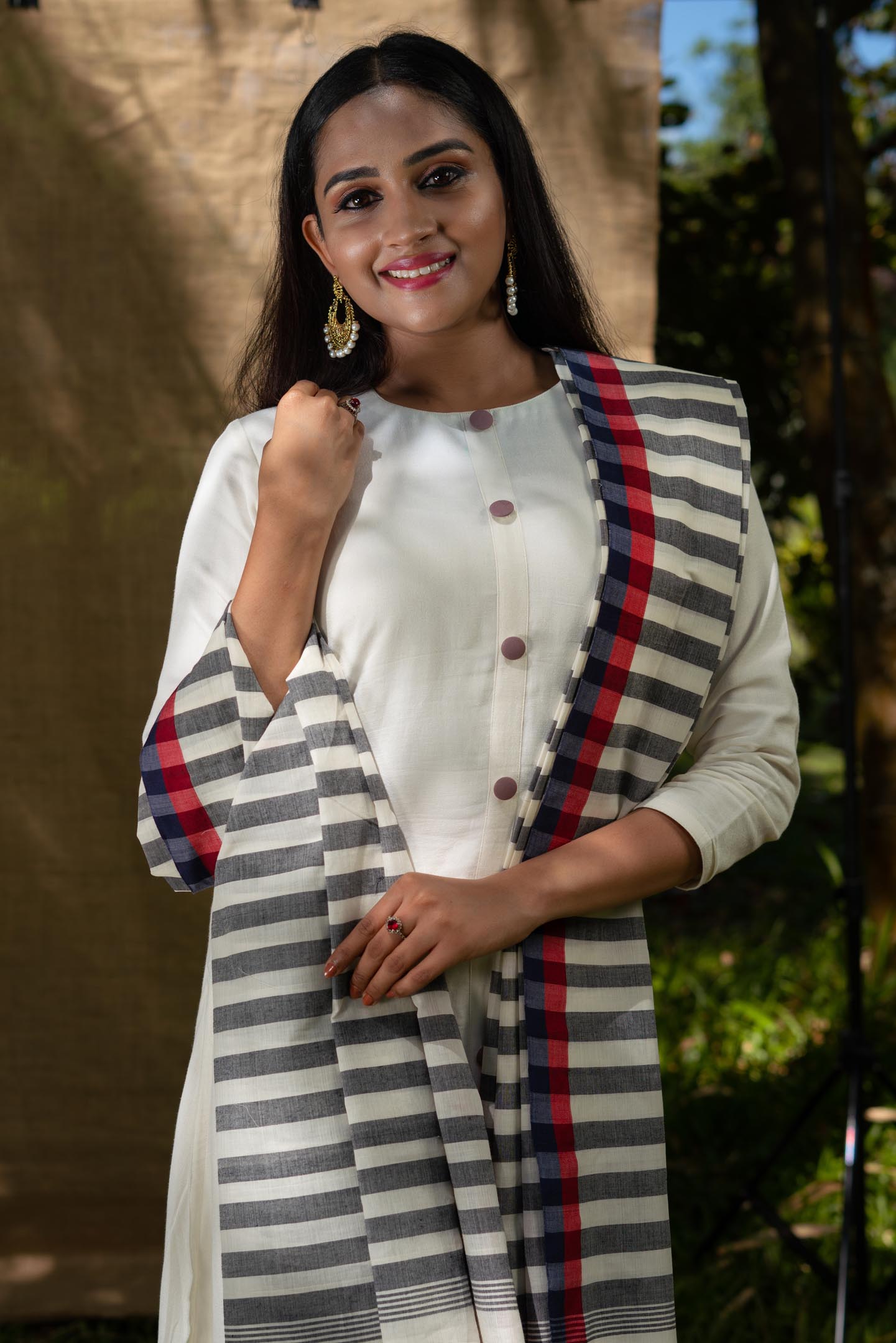
Anamika Dupatta
$1350
$1500
Traditional designs stand out. Here is a Dupatta which exactly does that. We have lines, end to end, simple but elegant design, which has traditional roots. Weavers were delighted to weave it, though it meant frequent thread change. The lines are distinct as they are handwoven. We want to associate the Zebra traits of individualism, free spirit, and distinctiveness with this Dupatta. As we are still debating on what to call this Dupatta design, we named it “Anamika”, one which does not have a specific name. Feel free to ascribe meaning to this Dupatta design as you adore it!! Story of Weaving: The handloom fabric is a type of fabric that is woven using hand operated looms. Two sets of interlacing yarns, the warp (length) and weft (width), are woven on a loom hand-operated by weavers. These looms do not use electricity. Human handling lends the fabrics a unique feel and renders the fabrics more value. The resultant fabric is softer, more durable and much more comfortable than machine-made fabrics. Handloom cotton is more breathable and thus feels lighter in summers and provides more insulation in winters. The dyeing process also becomes easier for handloom cotton as the colour penetration is substantially more. Hues are absorbed better thus look resplendent on handloom cotton. The art of hand weaving is labour intensive and takes a longer time. But, the beauty it adds to the fabric is priceless. Choosing handloom cotton supports the rich weaving heritage of India and lets the weavers carry on the precious art-form to the future generations as well.
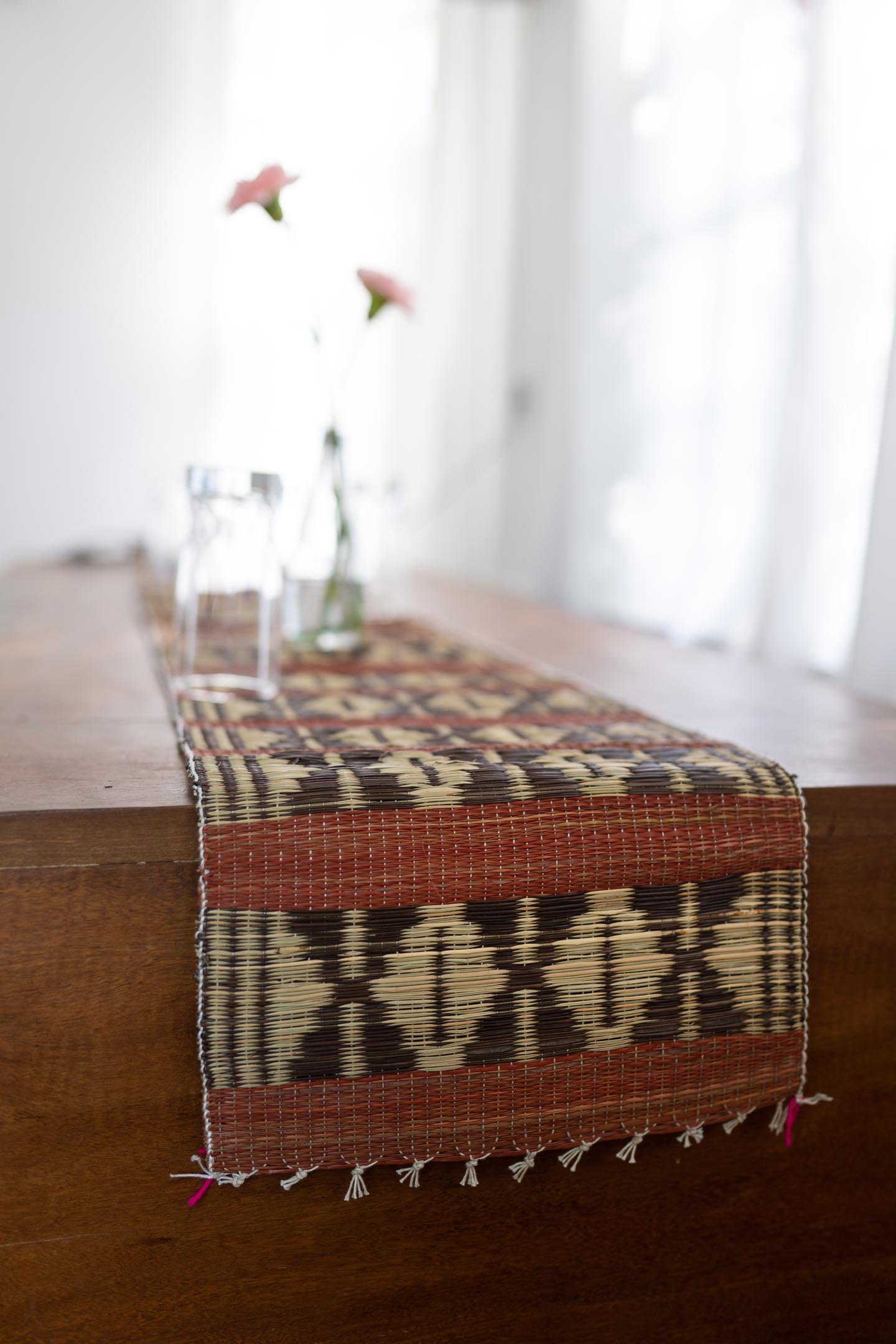
Chayilyam Runner
$1800
$1800
We always look for ways to be environment friendly and use natural materials as much as possible. With this spirit, we experimented with vegetable dyes. And here we are, with a mat dyed using natural colours extracted from plants. Though it takes an additional three days of processing, we feel it is worth the effort. We are confident, very soon, you will feel the same way. Chayilyam is the material used to give that mystic deep orange colour to the face painting in Theyyam and Kathakali art forms. Here, vegetable dyes are used to recreate that orange magic. Story of Cora Grass and Mat weaving: Cora Grass is found along river banks and in marshy lands. It can grow up to a height of two meters. Family members of mat weavers collect these cora grass and bring it for processing. They cut each grass stem into four strands and remove the soft material at the centre. Before further processing, the grass is dried under the sun, till it develops a beige colour naturally. The grass is then dyed using different colouring materials and processes to match artists imagination. Sometimes, the colouring process takes days, depending on the shade of colour desired. The handcrafted mats are woven using hand operated looms. A set of white yarns as the warp (length) and thin strands of cora grass as weft (width), are woven on a loom hand-operated by weavers. These looms do not use electricity. Human handling lends the mat a unique feel and more value. The resultant mat is softer, more durable and much more comfortable than machine-made mats. The cora grass strands are compacted by hand by the weavers, ensuring sturdiness to the mat. The art of hand weaving is labour intensive and takes a longer time. But, the beauty and quality it adds to the mat is priceless. Choosing handwoven mats supports the rich weaving heritage of Killimangalam and lets the weavers carry on the precious art-form to the future generations as well.
